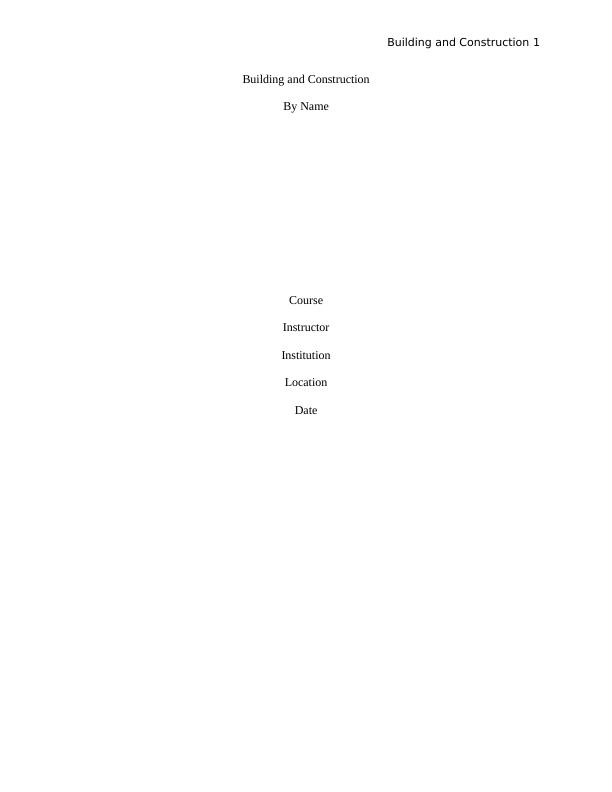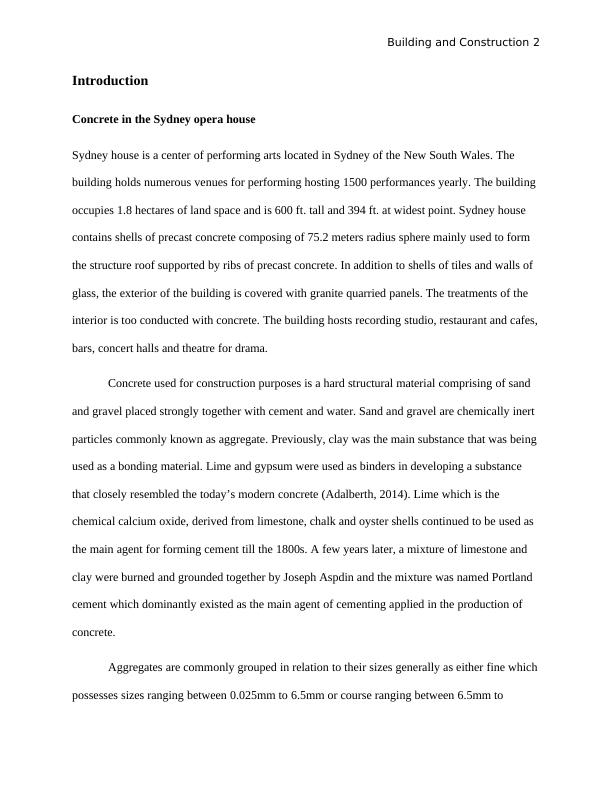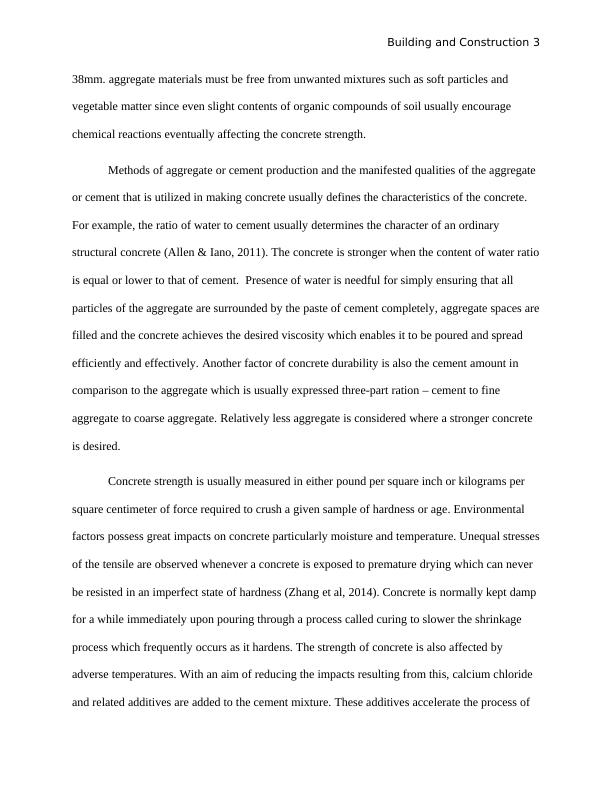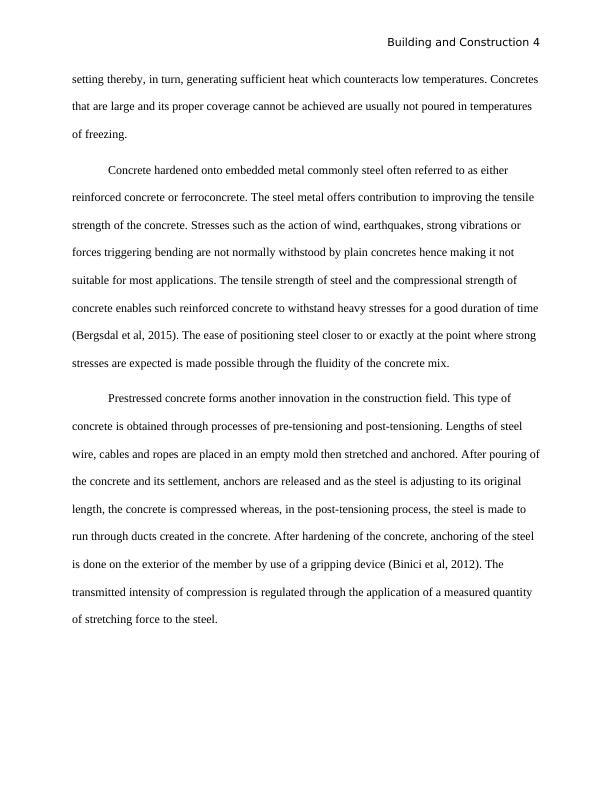Concrete in the Sydney opera house
20 Pages4460 Words371 Views
Added on 2021-05-30
About This Document
Concrete used for construction purposes is a hard structural material comprising of sand and gravel placed strongly together with cement and water. The strength of water is needful for simply ensuring that all particles of the aggregate are surrounded by the paste of cement completely, aggregate spaces are filled and the concrete achieves the desired viscosity which enables it to be poured and spread efficiently and effectively.
Concrete in the Sydney opera house
Added on 2021-05-30
ShareRelated Documents
End of preview
Want to access all the pages? Upload your documents or become a member.
Selection of Building Materials: Raw Materials, Manufacturing Process, Onsite Installation, Testing Techniques, Advantages and Disadvantages
|13
|2197
|249
Seashell Pervious Concrete: A Green Substitute for Conventional Pavements
|6
|2928
|226
Construction Defects Assignment PDF
|8
|1596
|201
Materials Science in Construction: Honeycomb Defect and Its Solution
|8
|1732
|68
Addressing Sustainability and Environmental Issues
|4
|1225
|76
Process Systems Analysis
|16
|2992
|91




